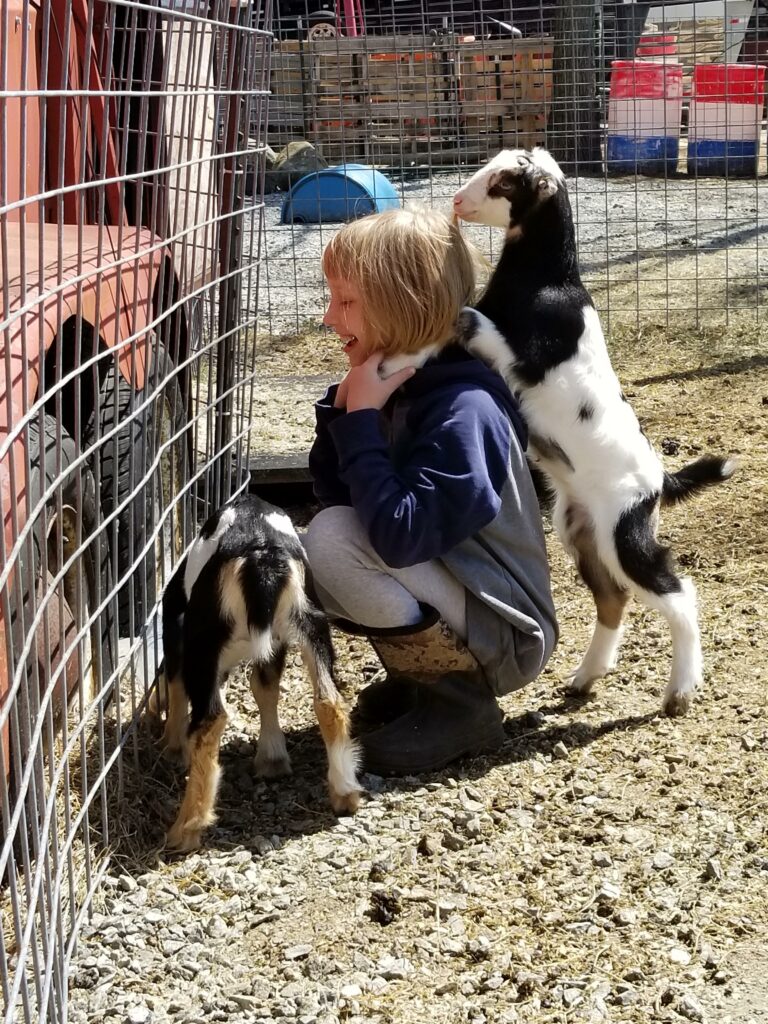We draw blood and test annually for “the big three” diseases in goats: CAE, CL, and Johne’s disease. In addition, we quarantine new goats for at least three weeks and we buy animals from other herds who test or make sure new animals are negative before turning out with our current goats.

CAE stands for Caprine Arthritis and Encephalitis and can be transmitted through blood, milk and other bodily fluids. Symptoms include arthritis in adult goats and encephalitis in young goats and kids (ataxia, progressive weakness, proprioceptive deficits). Subclinical symptoms include interstitial pneumonia, hard udder mastitis, and a failure to thrive. The most common method of transfer is through milk and colostrum. It is common for goat breeders to bottle feed baby goats with pasteurized milk and heat treated colostrum as CAE prevention. Breeding with a CAE infected animal or in utero infection can also transmit CAE, although it is less common.
CL stands for caseous lymphadenitis and is a highly contagious chronic infectious disease that is caused by a bacteria. CL results in abscesses in the lymph nodes, open or not, and/or general poor condition if the infection is internal. Affected animals are often culled to avoid transmission to others. Once established on a farm, the bacteria can live in the soil for a long time.
Johne’s disease, or paratuberculosis, is a bacterial infection of the intestinal wall. Symptoms include weight loss, submandular edema and weakness. The typical transmission route is oral-fecal, but transmission through milk is possible. The bacteria can remain in the environment for years.
We tested our whole herd in November for all three and the results can be found here. We continue to maintain a herd free of all 3 diseases.
